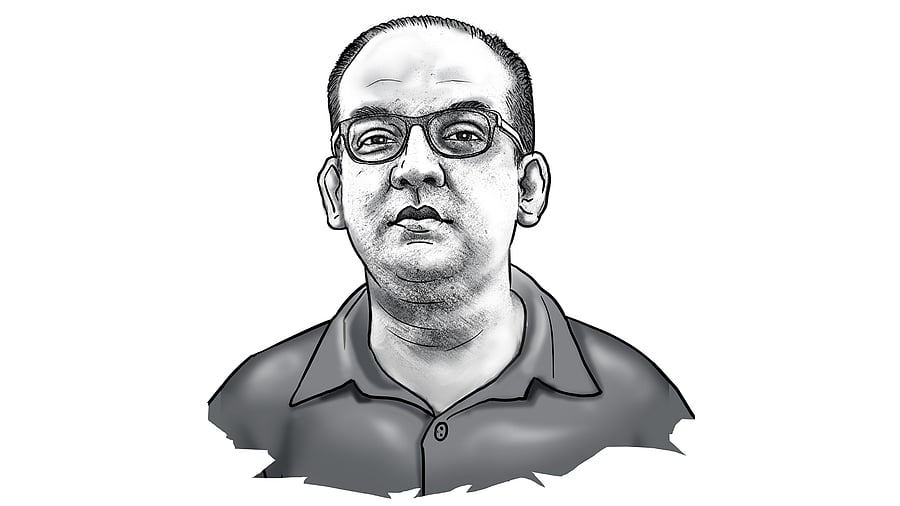
Vivek Kaul lives to read crime fiction, and unlike his honest ancestors, makes a living writing about economics.
@kaul_vivek
Real GDP growth during 2023-24 is expected to be at 7.3%, which is pretty good. But private consumption expenditure, which forms about 60% of the GDP, is expected to grow only 4.4%. Other than the pandemic year of 2020-21, when private consumption contracted by 5.2%, this is the slowest growth since 2002-3, when it had grown 2.9%. And that’s something.
While the media went to town talking up the 7.3% overall economic growth, there was barely a mention of consumption growing at its slowest pace in 21 years.
In fact, if we look at consumption growth from the end of 2018-19 to the end of 2023-24, it averages 4.5% per year. Compare that with the average consumption growth of 7.2% per year in the five years from 2013-14 to 2018-19, which tells us that a significant portion of the population is still struggling with the after-effects of demonetisation and the pandemic.
So, what is driving economic growth? Investments. In fact, investments are expected to make up nearly 48% of the increase in the size of the economy from the end of 2022-23 to the end of 2023-24. If we look at data over a 5-year period from the end of 2018-19 to the end of 2023-24, investments make up for nearly 46% of the increase in the size of the economy.
Typically, investments create jobs, jobs pay people, and people then go out and spend that money. But that dynamic isn’t playing out in full force. It could be because investments are happening in capital-intensive sectors, which aren’t large job creators.
In a recent research note, the Bank of Baroda’s Economics Research Department has a possible explanation. The note looks at investment intentions for April to December 2023. The services sector accounts for 49% of the investment intentions. Of which, transport services contribute 94% because airlines are placing orders for new airplanes.
Within manufacturing, which forms 28% of the investment intentions, chemicals and machinery have shares of 42% and 19%, respectively. Now, this seems like investment in capital-intensive sectors -- which do not create as many jobs as a labour-intensive sector can possibly do -- explaining why investment growth hasn’t really spruced up consumption growth. It also means that the investment-led growth in its current form is benefitting only a small part of the population.
In fact, the lending by banks to micro, small and medium businesses stood at 4.1% of GDP as of March 2013. It has since fallen to 3.1% as of March 2023 (though up from 2.5% as of March 2019 and March 2020). This tells us that smaller businesses, on the whole, are not doing particularly well.
Now, there is a whole host of data out there that shows that all is not well. As per the Periodic Labour Survey for 2022-23, 45.8% of the labour force works in agriculture, a jump from 42.5% in 2018-19, though there has been a fall from 46.5% in 2020-21.
What does this mean? In the aftermath of Covid, people have moved from more productive sectors to the agriculture sector, where there is a lot of disguised unemployment -- meaning that there are way too many people trying to make a living out of agriculture. While they seem employed, even if some of them stopped working, agricultural production won’t suffer.
This, along with high rural food inflation of 6.8% in 2022-23 and in 2023-24 (from April to November), has impacted the ability to consume, especially in rural areas. It’s hardly surprising that FMCG companies keep talking about the lack of purchasing power of the rural consumer. Of course, the central government realises this. Which is why in late November, it decided to extend the PMGKAY scheme providing free food grains to more than 810 million beneficiaries for the next five years.
It is also reflected in the work demanded by households this year under the NREGS, the rural work guarantee scheme. From April to December 2023, the work demanded has been higher than similar periods in any of the previous years, except for the Covid years of 2020-21 and 2021-22.
But as India marches toward becoming a $30 trillion, $40 trillion, $60 trillion economy, the stock market rises higher and higher, and real estate prices go way beyond what even the middle class can afford, people aren’t really interested in the devil in the detail. It hampers the stories that they are being told and the stories that, in turn, they are telling themselves. Everybody loves a good story, nobody wants data to spoil it.